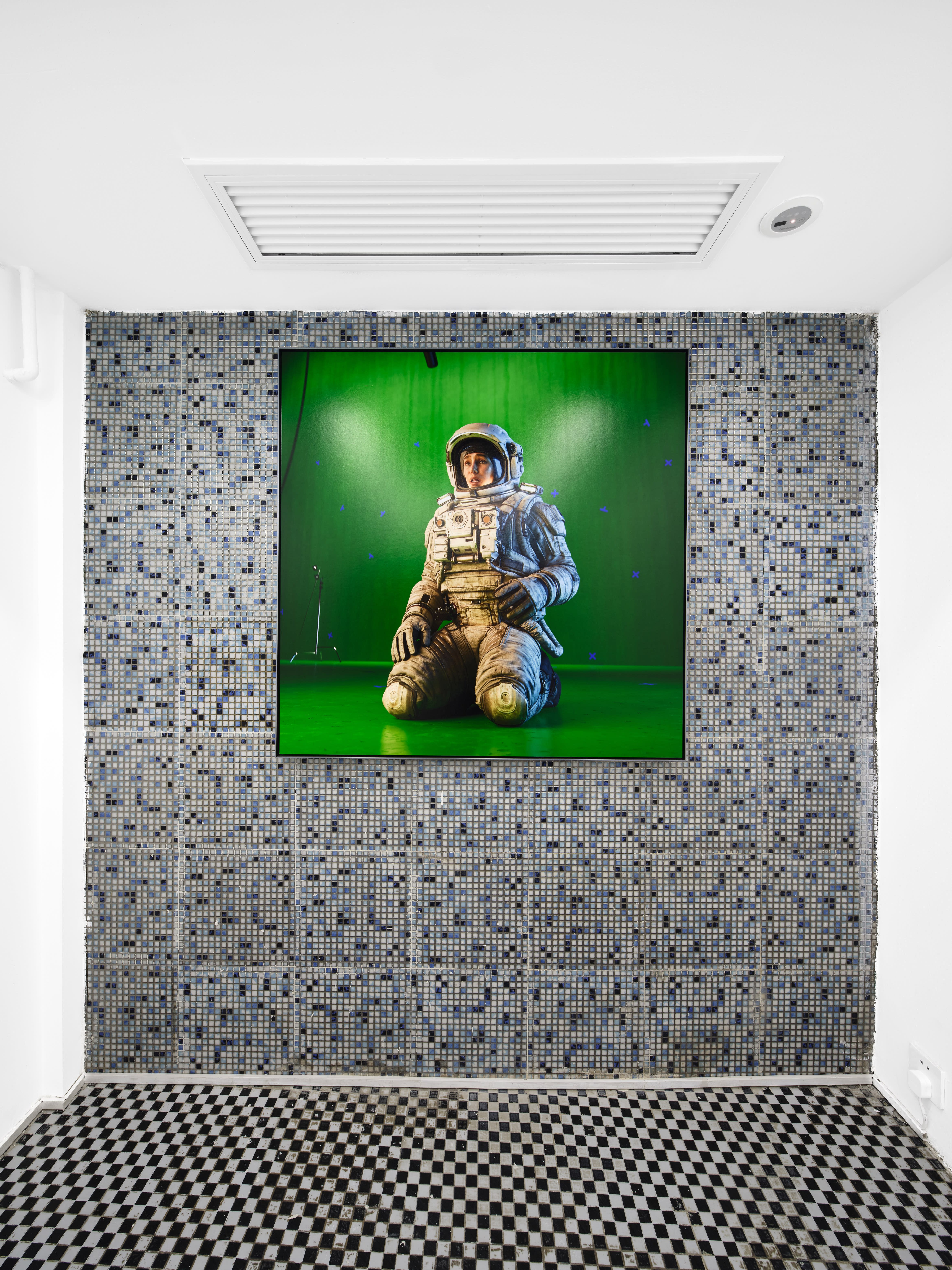
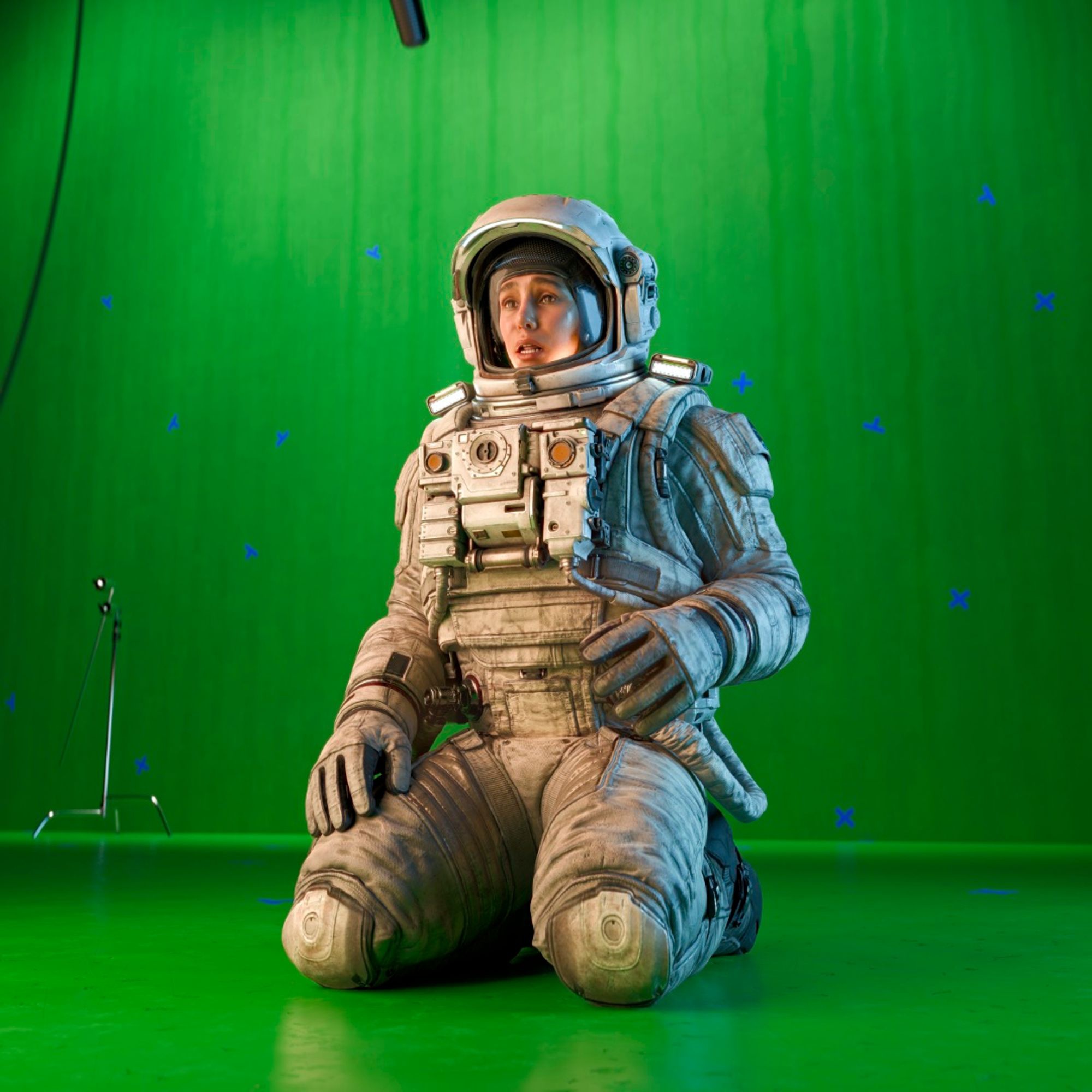
Julian Junyuan Feng
Loner, 2023
CGI archival pigment print
100h x 100w cm
© Courtesy of the artist
In Norse mythology, the three goddesses of Fate (Norn) are seen as the mysterious weavers of the universe, controlling the destiny of everyone and everything. They maintain the “World Tree” (Yggdrasil), whose leaves pronounce the fate of mankind and the gods. Urd, as one of the three goddesses, is in charge of the “past” of the cosmic time stream. As the theme of “That's How We Grow Up” suggests, the past has a profound impact on destiny - one that cannot pass away, one that shrouds the present, and one that holds the future in its grip.
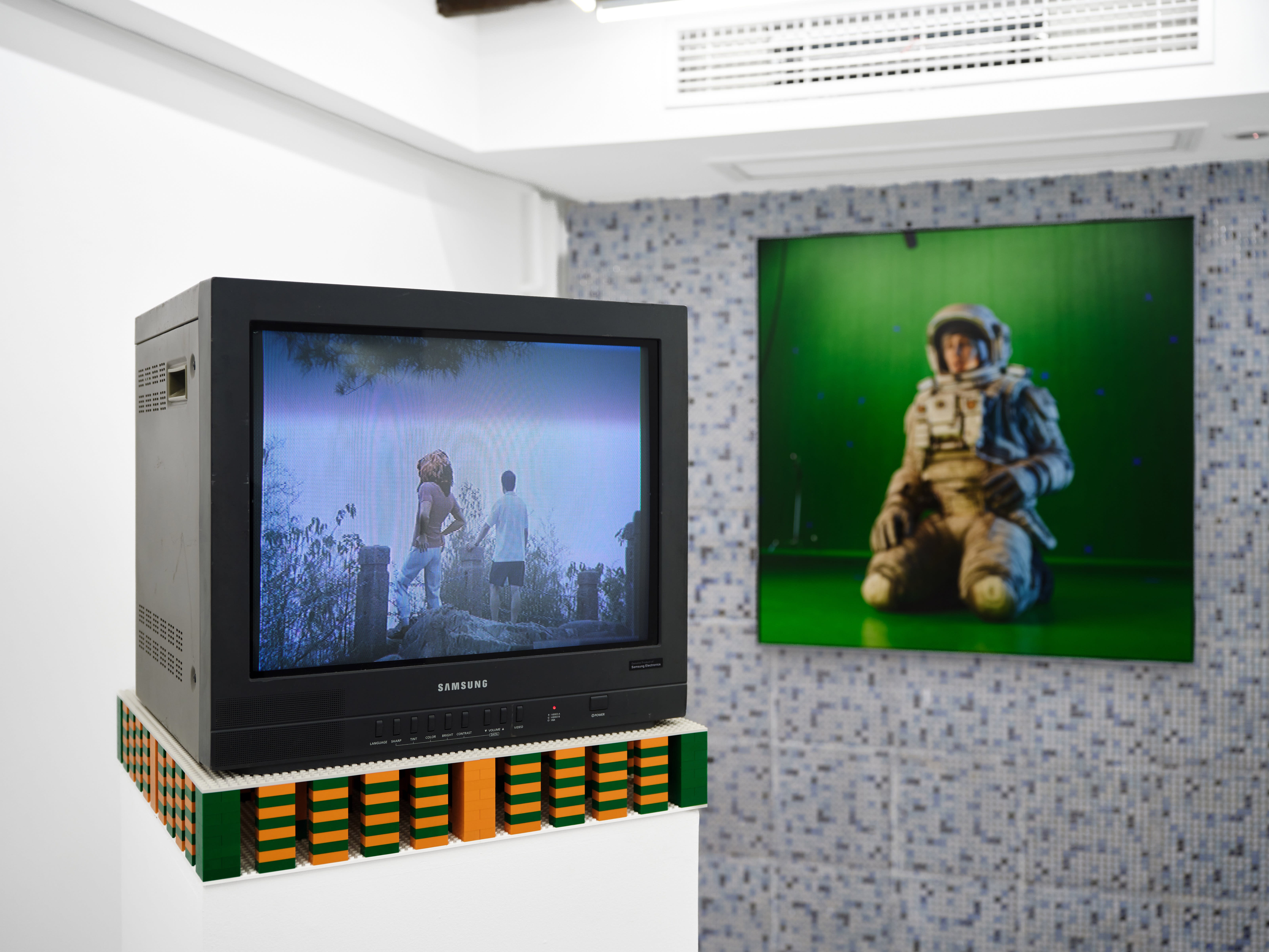

Di Yang
Miles away, Disneyland, 2024
Single channel video
2048 x 1536
8min 22sec
5+2 AP
© Courtesy of the artist
Stepping into the exhibition, the deconstruction of childhood is as obvious and pervasive as the architectural separation of space: stepping into the half-floor bathroom, the childish blocks immediately evoke a humid and claustrophobic fantasy. A vintage television, mounted on the fragile structure of childhood, plays Di Yang's “Miles Away, Disnyland”. The bright and vibrant colors are muted by the grey climate, evolving into an absurd but real fantasy. Later, Julian Junyuan Feng's “Loner”is a contrasting account of the confusion of waking up from a dream.


Mo Tong
Red Scarf and School Uniform, 2024
Oil on canvas
70h x 50w cm
© Courtesy of the artist
Childhood growing up in this land is dismembered into fragments of memory over a long period of time and space, and then anchored in a vast network of strings of fate. In the narrative of the Three Goddesses of Fate, Urd's “red rope” is often used as a symbol of clues that connect the gods, humans and nature, anchoring them in the established structure of the universe. In the exhibition space, various scattered childhood deconstructions (or interpretations) are similarly linked by implicit clues, interweaving the similar fatalistic undertones of a generation growing up under the influence of the same cultural environment.
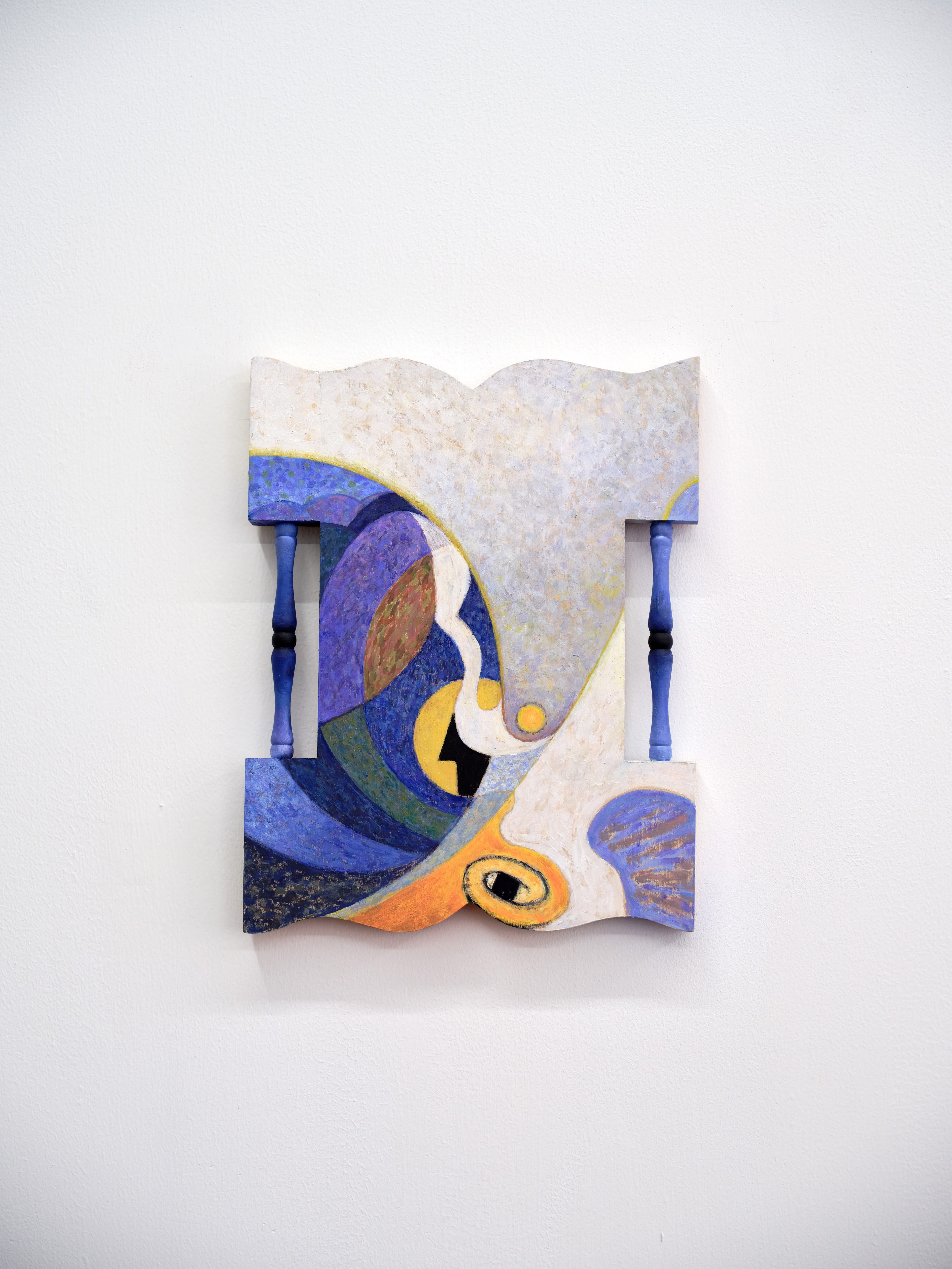
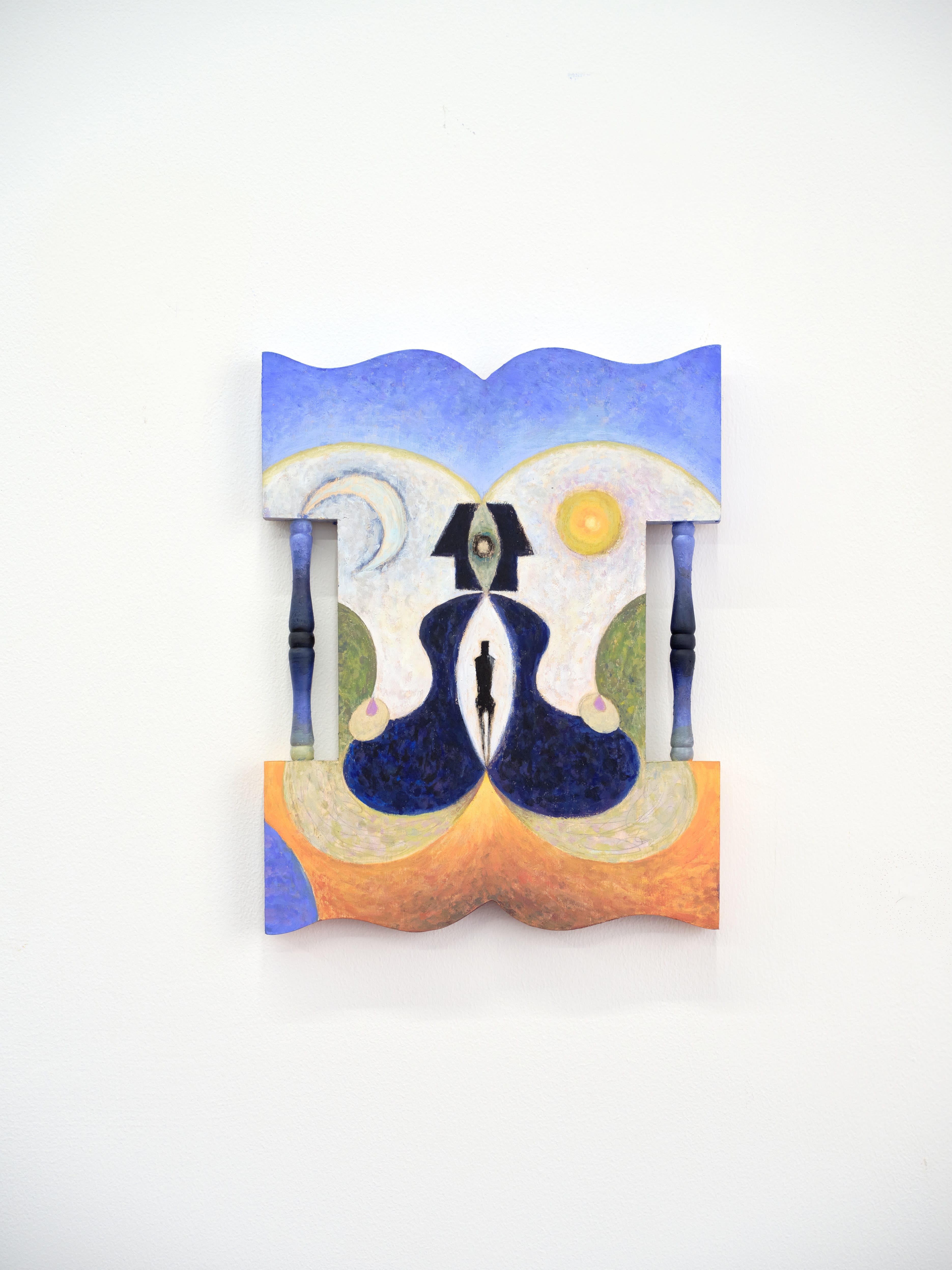

Yunchun Wang
Review I&II, 2024
Oil on wood panel
67.5h x 54w cm
© Courtesy of the artist
Following the clues, the dark green walls of the “classroom” echo the whispers of childhood in the gaps of the tightly organized curriculum. Julian Junyuan Feng's “Judd in Uniform” and Mo Tong's “Red Scarf and School Uniform” capture common memories of childhood in the collective consciousness and symbolize them. Red Scarf and School Uniform” captures the common memories of childhood in the collective consciousness and symbolically amplifies the part of discipline and uniformity. In contrast, Yunchun Wang's “Review I&II” collects the hidden literary and artistic parts underneath the standardized life, such as the extracurricular books in the summer homework or the compressed art class, and expresses the surging undercurrents of childhood in an imaginative gesture, sweet and sentimental. It is a sweet and sentimental expression of the undercurrents of childhood.

 Hui Tao
Hui Tao
Untitled, 2018
Archival pigment print
38h x 28.5w cm x 5
6+2AP
© Courtesy of the artist
Photo credit to 金浩钒
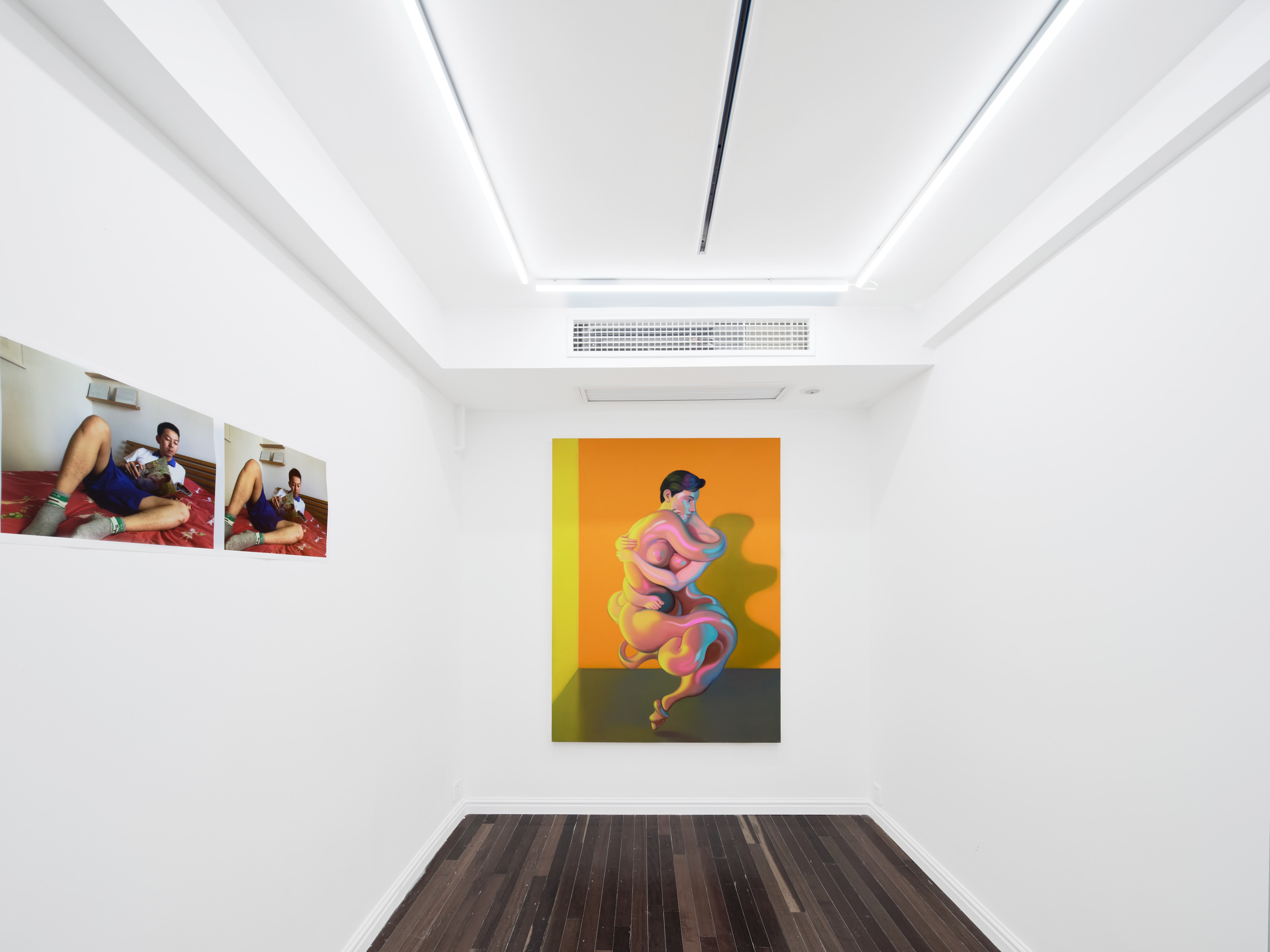

Yanmeng Zhang
Orange Room, 2024
Oil on canvas
160h x 120w cm
© Courtesy of the artist
Above it, another small space is like a “sex education room”, filling in the missing link in the collective consciousness with empty fantasies. Whether it is the blasphemy of surveillance in Hui Tao's “Untitled” or the direct and intense but twisted entanglement of flesh in Yanmeng Zhang's “Orange Room,” the work speaks of the direct and intense but twisted entanglement of flesh. The entangled flesh in Yanmeng Zhang's “Orange Room” all speak of the same hormone-catalyzed illusion that is difficult to dissolve, and the hard conflict between inner desire and reality.
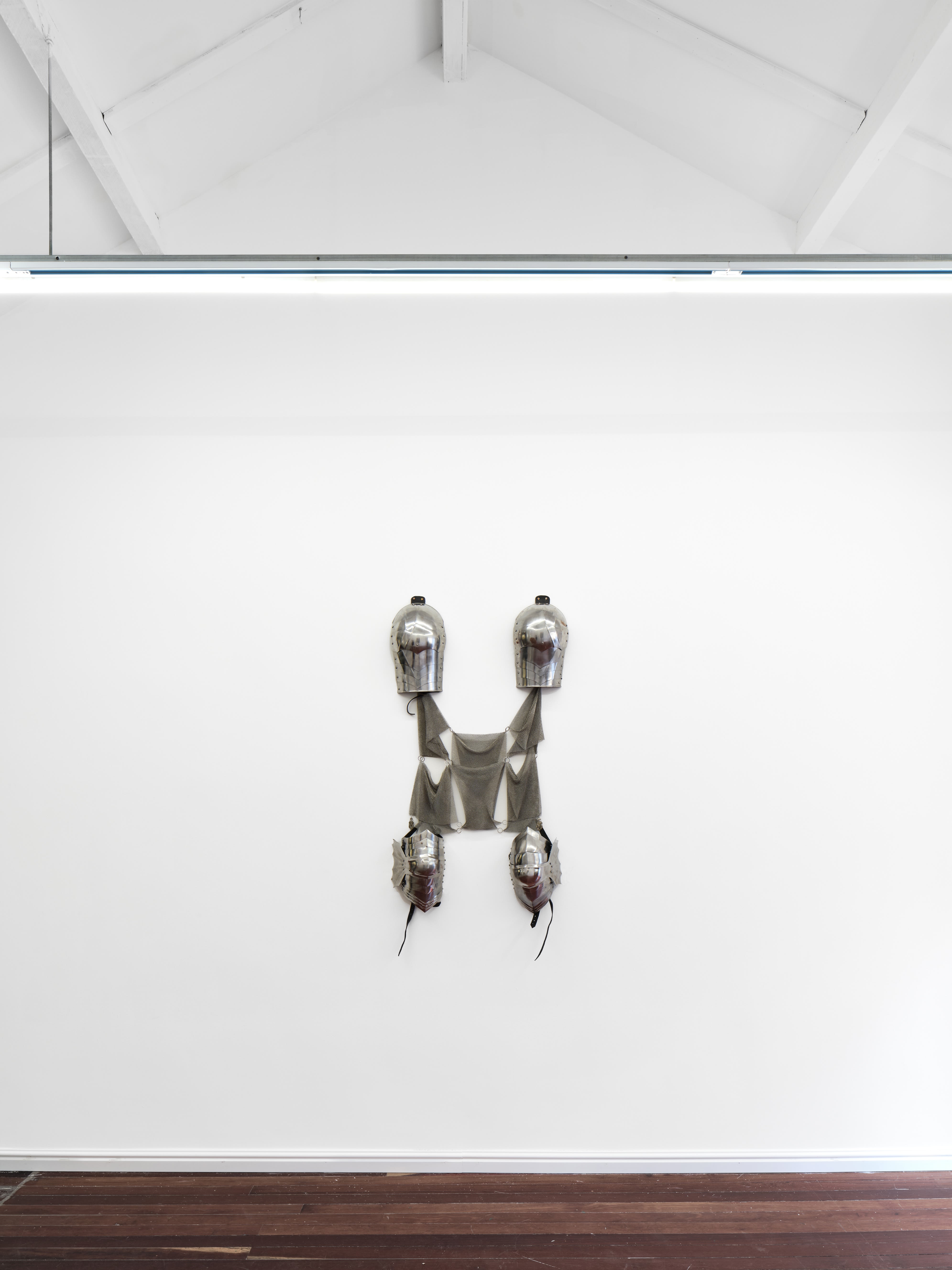

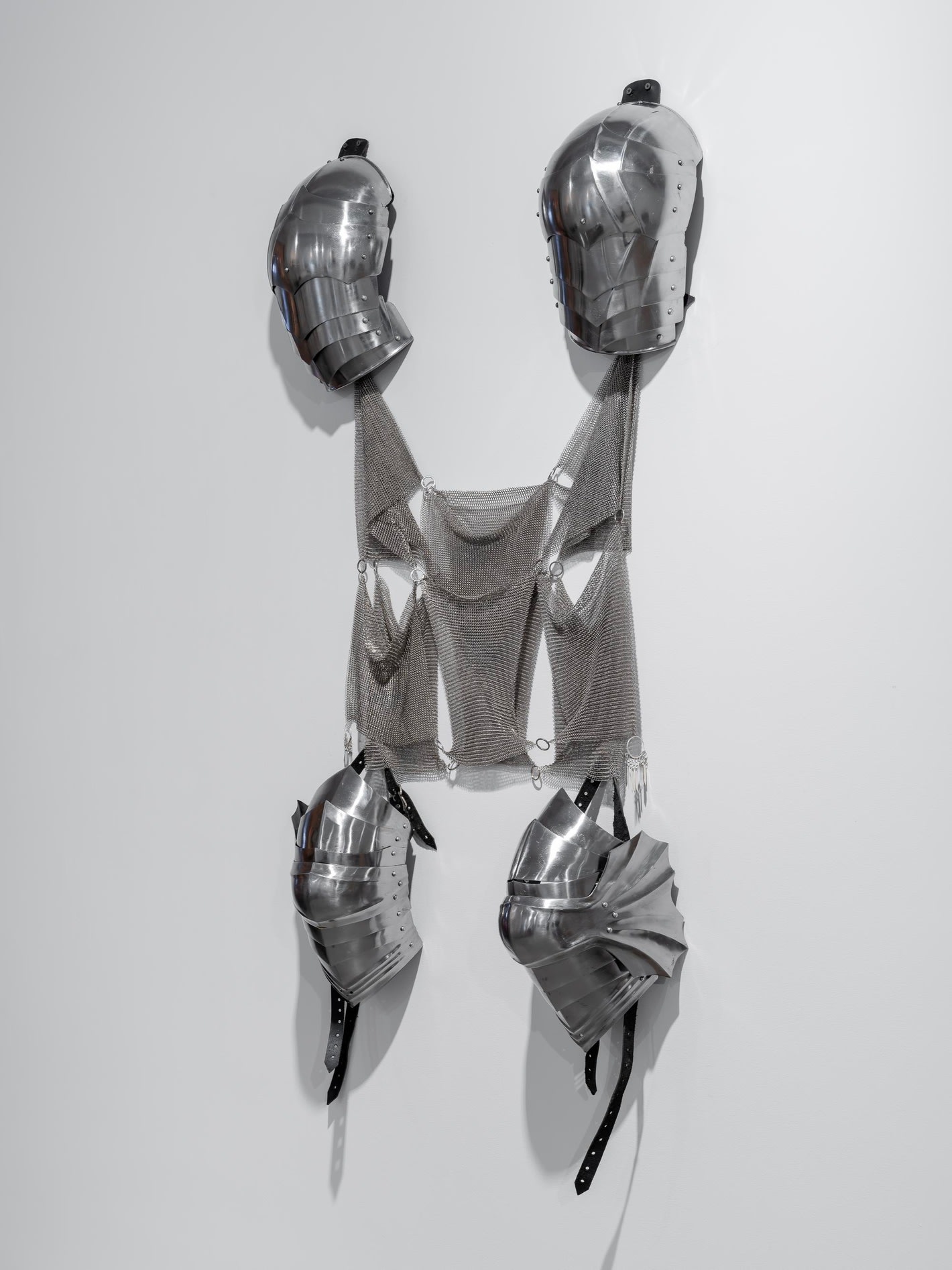
Julian Junyuan Feng
Testudo Formation, 2022
Low-carbon steel, stainless steel,
cowhide leather, mineral oil
144h x 68w x 19d cm
© Courtesy of the artist
On the top floor, Julian Junyuan Feng's installation “The Wound Man” and “Testudo Formation” appear in metallic hardness, seemingly alluding to the weathered and dried shells formed during growth. The shells are hardened with metal. Xueqing Zhu's painting “Chronic Injuries and Metaphors”, on the other hand, slowly describes the soft interior of the hard shell and the hidden wounds left by the process of growing up. In contrast, Susanna Wong's “Fuzzy Emotions” and “Merry Christmas” leave behind discrete imagery and a continuous search for the “true self”.
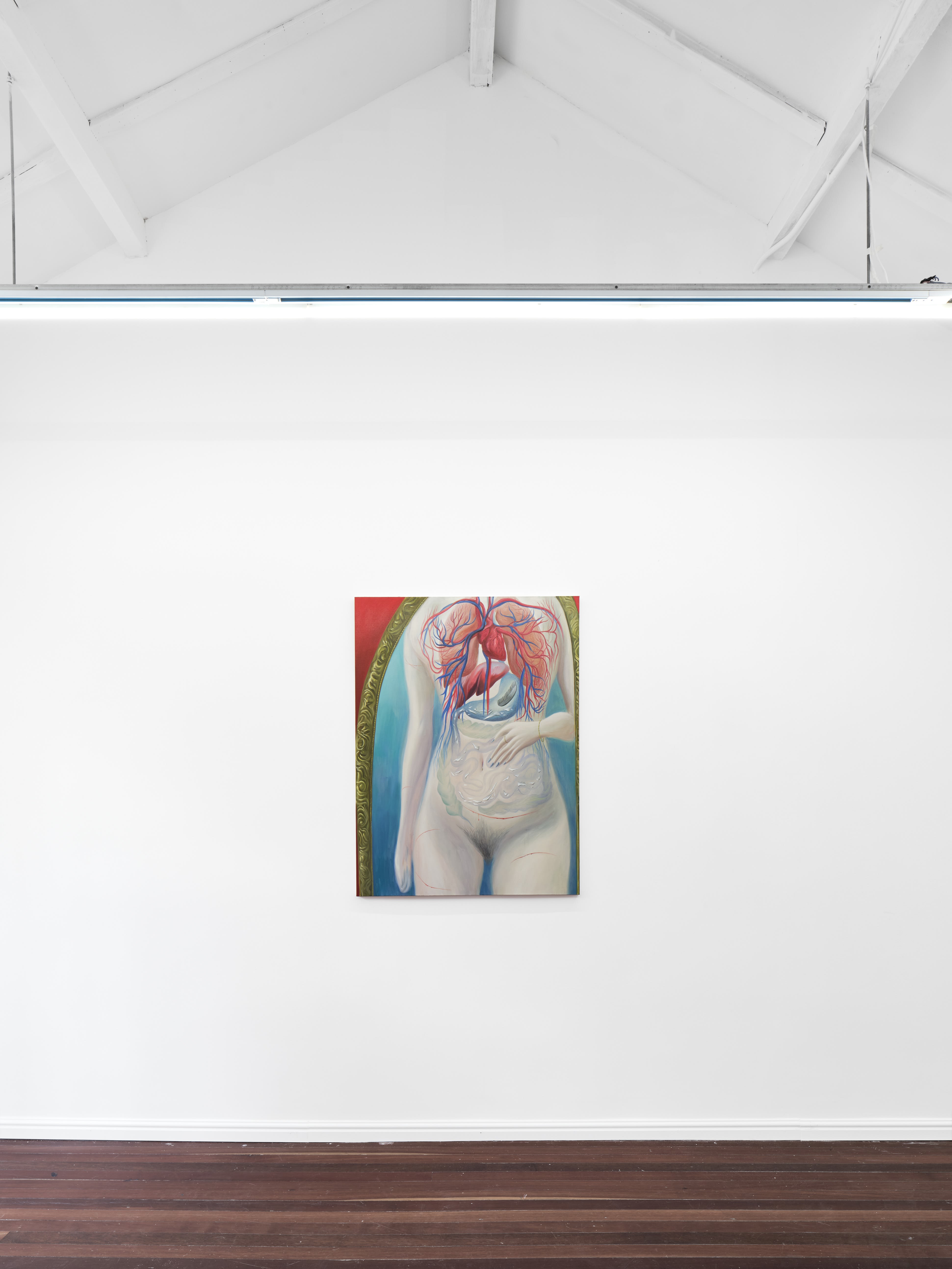
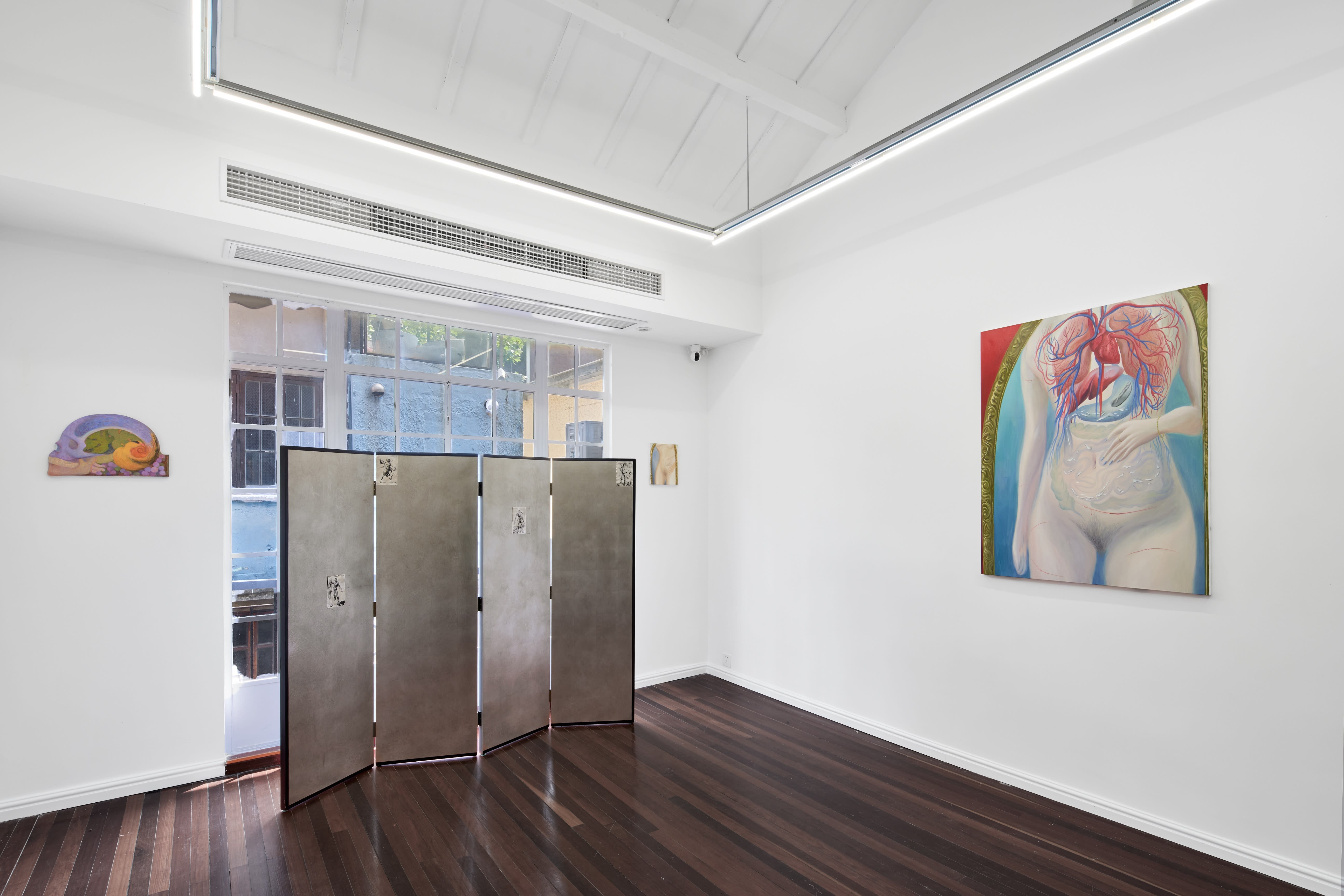

Xueqing Zhu
Chronic Injuries and Metaphors, 2024
Oil on canvas
120h x 90w cm
© Courtesy of the artist
The whole exhibition seems to revolve around Derrida's deconstructionism, dismembering and splitting the complete and chaotic universal childhood, and extracting the different aspects of traditional programs, norms, education system and individual thinking from the perspective of art sociology. They are distinct and conflicting with each other, yet mixed in one place, like “washing its light in a salty pool”, experiencing the importance and reminiscence after tearing and transforming. Here, the sun's rays are transformed into endless fragments in the pool, forming clues that run through the past, the present and the unknown tomorrow.
Text by Roxane Fu

